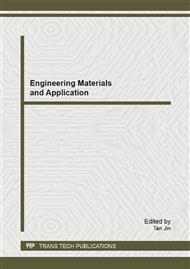p.3
p.7
p.12
p.18
p.24
p.29
p.33
p.38
Degradation of Porous Starch Granules and Poly(Butylene Adipate-co-Terephthalate)(PBAT) Blends: Soil Burial and Enzymatic Tests
Abstract:
In order to confirm the feasibility of porous rice starch granules and PBAT blends as biodegradable composites, their degradability were carried out. Enzymatic degradability evaluation showed that α-amylase degradation of starch increased as the starch content in the blend increased. Burial test of the blends for 1-4 months was carried out and the rate of degradation of the PBAT/porous starch blend was confirmed to be slower than those of PBAT/native rice starch blend. Observation of the film blends structure by scanning electron microscope revealed that the starch was dispersed in a PBAT matrix. Furthermore, changes in the film surface after enzyme treatments were observed. The results obtained from the degradability of the porous starch granules and PBAT blends showed that this bio-composite was relatively slow, regarding as controllable degradation material.
Info:
Periodical:
Pages:
12-17
Citation:
Online since:
January 2013
Price:
Сopyright:
© 2013 Trans Tech Publications Ltd. All Rights Reserved
Share:
Citation:


